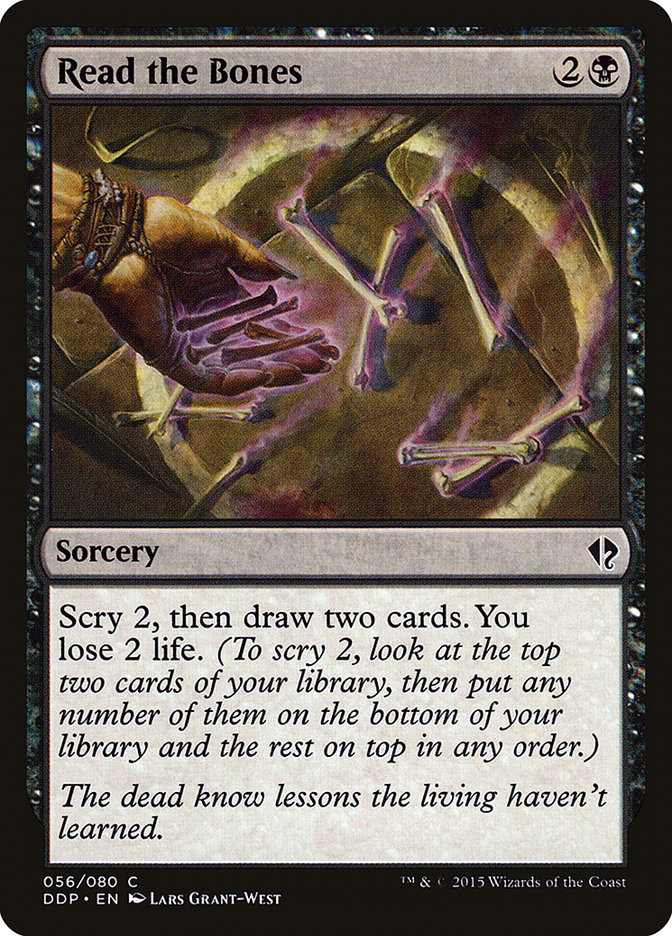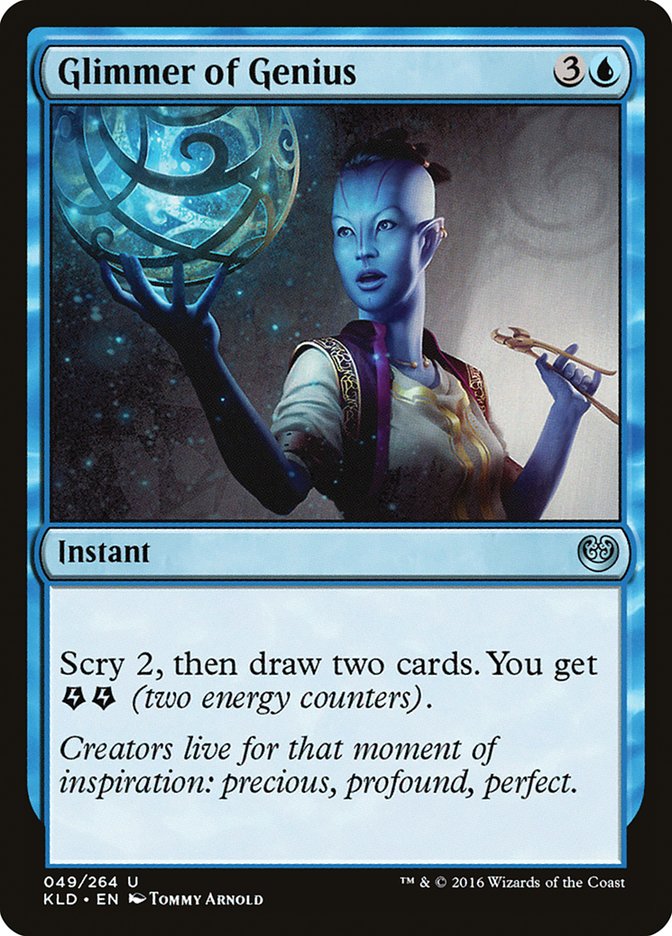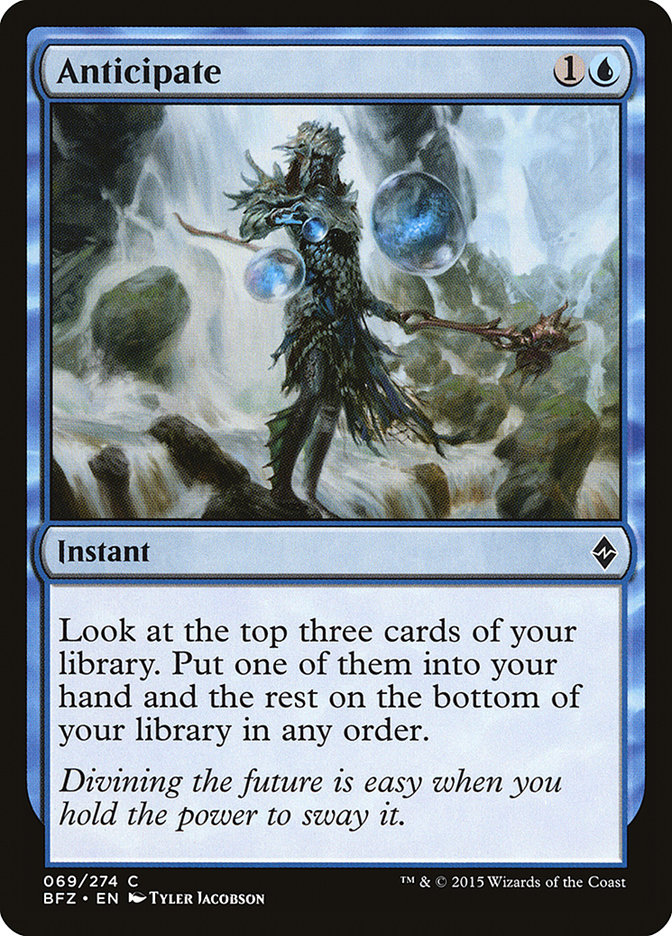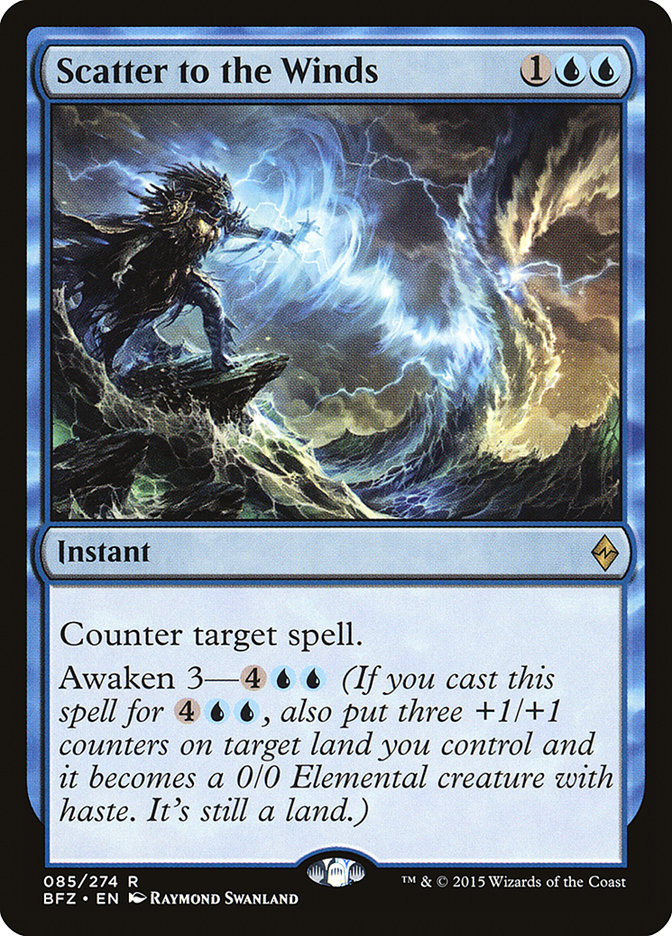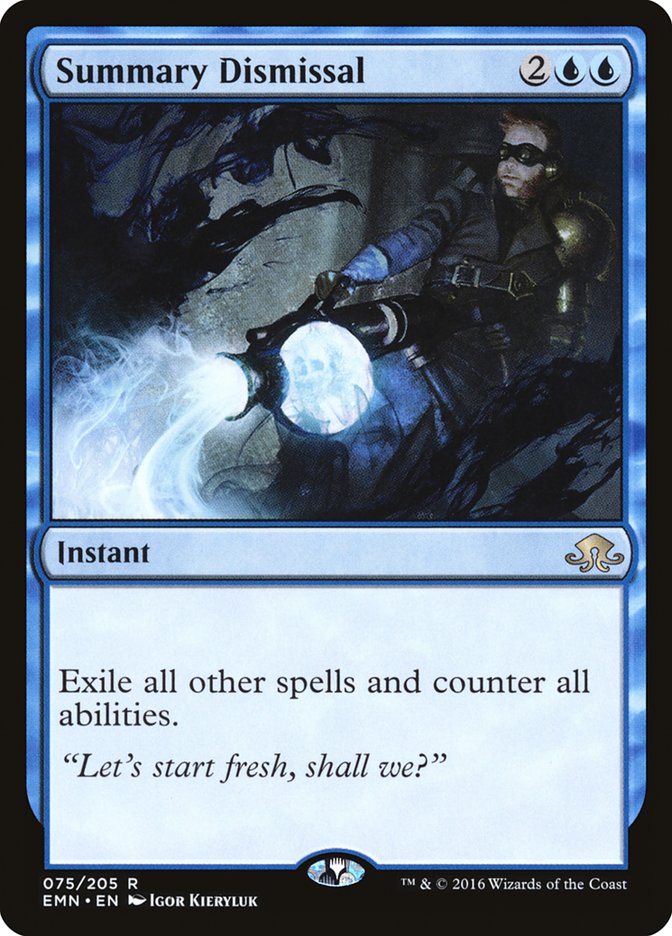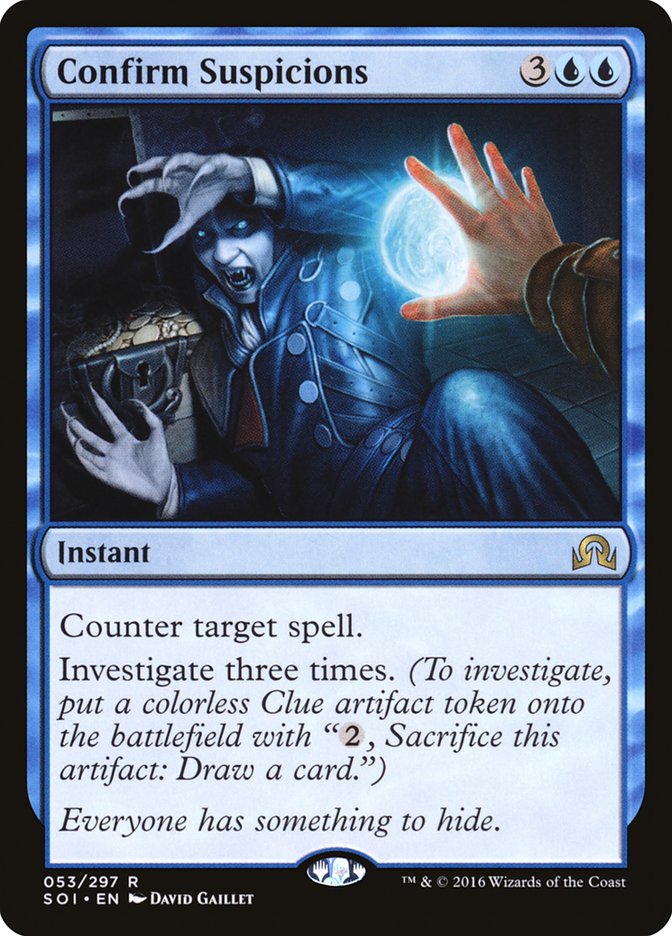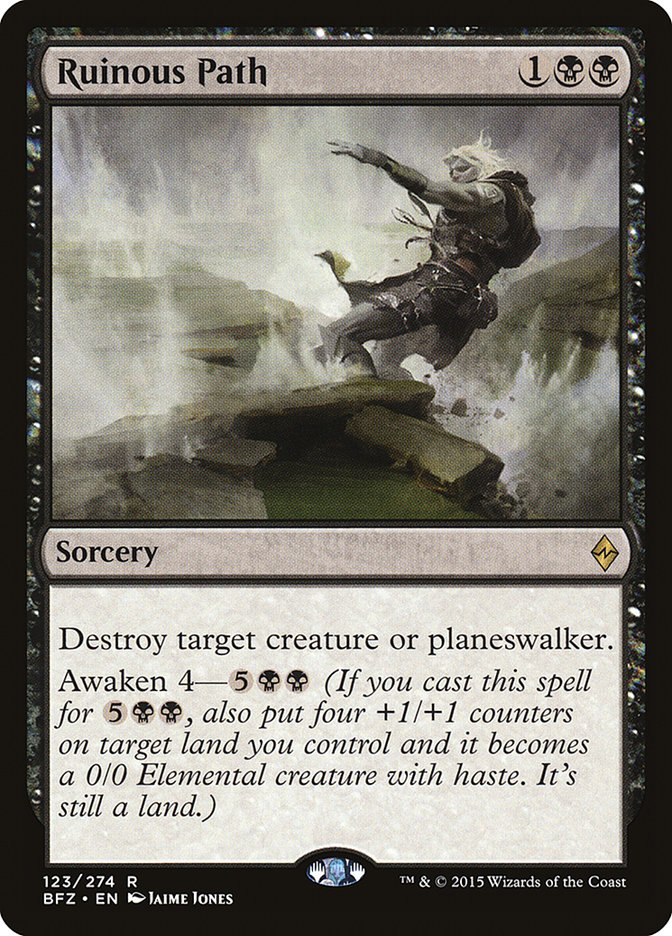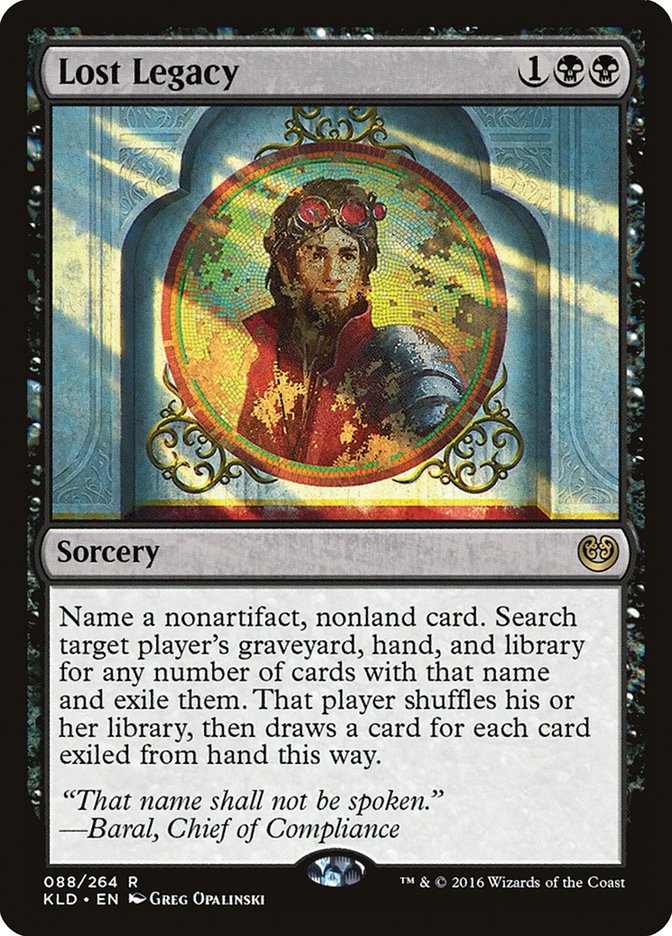Creatures (6)
Planeswalkers (1)
Lands (26)
Spells (27)

Creatures (5)
Planeswalkers (2)
Lands (26)
Spells (27)

Another Pro Tour in the books, another Mono-Red victory to protest. That was going to be the opening line of this article when a R/W Vehicles (Mono-Red in disguise) deck inevitably won the Kaladesh showdown in Honolulu. As I watched coverage and saw a few control decks breach the Top 8, I had a small feeling of hope. I believed that control would emerge as the victor, and I watched with excitement as Shota Yasooka crashed through the competition, defeating another control deck in the finals of Pro Tour Kaladesh.
The last Pro Tour was also won by a control deck, but the elements that made it so successful have rotated.
Read the Bones was the big hit to black-based control decks, and we looked to Kaladesh to bring us a replacement for the spell that guarantees us hitting land drops. Glimmer of Genius was the replacement for card advantage, but it doesn’t help us in the early turns. The answer to this dilemma actually rested in an older set, a card that was completely cast aside.
Anticipate is the answer to control’s struggle in the early turns and enables us to continue to push forward our expensive agenda. I crafted three decks that you can see in my last article, but the best deck I posted happened to be the U/B Control list.
I ranked the U/B Control list as the second best deck, after the B/R (or Mardu from the SCG Newsletter) list. This turned out to be false because of the lack of aggressive decks that emerged from Pro Tour Kaladesh. The Aetherworks Marvel Combo deck, Jeskai Burn deck, various emerge strategies, and Emrakul decks all pose a threat to a control deck that is built to defeat the aggressive top decks.
Smuggler’s Copter is a unique card and requires instant-speed solutions, so we can’t build a deck with a bunch of sorceries and sweepers and expect to be competitive. The reality is that sweepers and sorceries are pretty great against the other strategies, when a B/G Delirium battlefield gets out of hand, or the emerge threats move out of reach of traditional removal. The way to kill these two birds with one stone is to just prevent them from ever resolving.
Creatures (5)
Planeswalkers (4)
Lands (26)
Spells (25)

I Love Counterspells
Counterspells are back and in full force. Before the Dark Petition popularity boom in Standard, I was all about some Scatter to the Winds, Clash of Wills, and a reactive arsenal to deal with the threats of the format. It is never a bad day when these more expensive counters help us defeat aggressive, midrange, and especially combo decks. The U/B Control deck I have posted utilizes the counterspells more than the decks featured in the Top 8 of Pro Tour Kaladesh. This list was tested and finalized before the event and I only shifted a few cards around from the original.
The amount of Torrential Gearhulks was perfect, the removal suite was close to optimal, and I still favor Scatter to the Winds over Void Shatter. Those who have been following my work may remember the love I had for Scatter to the Winds. The ability to create win conditions attached to hard counters is enough to sell me on the glorified Cancel.
There are some merits to Void Shatter as the go-to counterspell of Standard. With Torrential Gearhulks feasting on the graveyard, Haunted Dead ghosting around, artifact creatures that revive themselves from the dead, and other similar scenarios, the graveyard is still an integral part of the format. The answer is not a three-mana counterspell, however. If you can catch a spell here or there, you may get a molecular edge, but in my experience Scatter to the Winds provides devastating swings more often.
This decision is based on playstyle and what you are more comfortable with. I will not fault you all for playing Void Shatter if you want maximum defense against the graveyard.
The other counterspells are fewer in number and more diverse. The use of Summary Dismissal is a must in the maindeck in order to prevent an eventual Emrakul, the Promised End loss. The Eldrazi inevitably rears its ugly head at some point in the late-game, and without a guaranteed countermeasure, it is tough to defeat. There are better options in the sideboard; however, there is minimal downside in having some defense in Game 1.
Summary Dismissal is a fine bullet because it isn’t a dud against anything. We can just add this to the Void Shatter category as a worst-case scenario.
The sideboard contains the spiciest blue spell, Confirm Suspicions. This counterspell is easily my favorite in the format and has the most upside with Torrential Gearhulk. The control mirror is back to a card advantage war, and there isn’t much better than countering a spell and getting three Clues. I’ve run this deck through the gauntlet dozens of times, and each time I just throw this counterspell at the first possible target I can in the control/midrange matchups. It is expensive and clunky in the early-game but an absolute blowout when deployed successfully. Negates join the team as well, performing the heavy lifting during the counter wars that we now find ourselves in.
Negate is also one of the cleanest answers for the Aetherworks Marvel combo decks, preventing a possible turn 4 loss. I don’t remember the last blue deck I piloted that didn’t include a few copies of this noncreature destroyer. I was even guilty of playing Negate in my Grixis Control deck that only contained ten blue sources. Oliver Tiu and Ralph Betesh were pretty aggressive on their dislike of any blue sideboard cards due to their difficulty to cast in some situations, but I never leave home without instant-speed defense.
The Power of Torrential Gearhulk
I ranted and raved as a guest on a couple of podcasts and articles about the best control card coming out of Kaladesh. Torrential Gearhulk is the Snapcaster Mage reprint that was going to shift the balance of power back to control. I was all about playing some Goblin Dark-Dwellers because of how similar it is to Torrential Gearhulk, but I found it difficult to consistently beat the combo and control decks that now have populated Standard after the Pro Tour.
Countermagic is the only pure answer to a lot of these new threats in the format, and if we are playing blue instants, Torrential Gearhulk is a must-have. There were a lot of criticisms when I posted the list prior to the Pro Tour centered on the amount of the giant blue artifact creature I was running, but four copies of Torrential Gearhulk is the only correct amount in a reactive control deck. I made a mistake a long time ago by playing less than four Snapcaster Mages and I have learned my lesson.
I know that this creature is six mana; however, it is a necessity on its mana-appropriate turn. Each game won win U/B Control has been from casting multiple copies of Torrential Gearhulk and utilizing Liliana, the Last Hope to start the cycle all over again. The creature hits like a truck, blocks the biggest threats, is a hard counter/card draw/removal spell, and is tough to play against.
One of the side effects of having to play so many Torrential Gearhulks is turning my back on my precious sorceries. Luckily for me, Glimmer of Genius is such a powerful card that I’m not tempted into splashing a third color for Painful Truths or playing the low-powered Live Fast. The instant-speed card draw spells have been the saving grace for blue control mages, but there are still some sorceries we have to play.
As I spouted off about how Torrential Gearhulk should be bought in bulk on Brainstorm Brewery and will be the key to control victory from the Island side, I may have mentioned how Smuggler’s Copter was kind of crappy. I have been known to underplay cards in aggressive decks because I am always considering the threat level they pose to control decks. Smuggler’s Copter has been a nonissue for U/B or Esper Control, falling to the plethora of instant-speed removal spells. The only awkward card against it is Ruinous Path, but anyone who has played a control deck in the last seven years knows what happens when a planeswalker goes unanswered against us.
The games where Torrential Hulk doesn’t go haywire, I achieve victory by easily reaching the ultimate of Liliana, the Last Hope; Ob Nixilis Reignited; or Jace, Unraveler of Secrets. There is a huge movement against using Ruinous Path that has blinded control players from realizing the fatal weakness of their chosen decks. Decks like U/B and Grixis have no choice and must keep three to four copies between sideboard and main deck, but Esper and Mardu Control can lean on the power of Anguished Unmaking to save the day. There are some strategies in-between that have access to delirium and can To the Slaughter opposing planeswalkers consistently as well.
The Changes
I didn’t change much from the initial release of the deck because of how well it has performed for me so far. I shaved off one Liliana, the Last Hope; one Kalitas, Traitor of Ghet; and one Ruinous Path, and switched around a few sideboard cards to better address the new format. These minor changes occurred after realizing how far four copies of Anticipate gets you through the deck. I don’t sideboard out Anticipate against anything and rely on it heavily to hit land drops as well as find me precious sideboard cards that must be used in the early-game.
Cards like Flaying Tendrils and Kalitas, Traitor of Ghet do the most damage early on and keep you alive against aggressive and graveyard strategies. I am back on Lost Legacy as the best answer for decks that go all-in on Emrakul, the Promised End and Ulamog, the Ceaseless Hunger. Summary Dismissal is my favorite maindeck solution as I mentioned, but having haymakers in the sideboard never hurts.
The only other changes of note were an increase in Aether Hubs and two copies of To the Slaughter instead of the fourth Ruinous Path. This could result in a disaster against R/W Vehicles when they slam their Gideon, Ally of Zendikar with another threat out; however, there are not many other scenarios that makes it that much worse than Ruinous Path coming out of the sideboard.
The Dilemma
I was getting wrecked with R/B Control on MTGO for a week after the Pro Tour results came in. I knew it was time to turn to one of my other creations and tweak it for the new age of Standard. Since that day, I have been on a tear with U/B Control on MTGO, as well as with paper testing. I’m sure I share a lot in common with you all when there is a deck that treats you well…it’s hard to put down. I haven’t had the urgency or desire to really test adding a white for Shambling Vents, a few copies of Anguished Unmaking, and a Sorin, Grim Nemesis.
I know just by the nature of adding another color that more lands will enter the battlefield tapped and the manabase will be more inconsistent. I obviously have a chemical desire to return to the glorious Esper Control deck, but I will not be giving in to that temptation for this weekend. The list you see here is the list I’ll be battling with at Grand Prix Providence. If the tournament result is a Top 8 berth, then I will continue to battle with a two-color strategy. Anything less than Top 8 and I’ll go back to the drawing board and determine if the power of a few white spells and Shambling Vents is worth the hit to consistency.
I’d love to hear your opinion on this and I know there are others out there who also prefer a two-color strategy. Also, good luck this weekend at SCG Milwaukee for all of you Modern enthusiasts, and be sure to check out my take on the format, as well as what I would play, on the SCG Newsletter!


